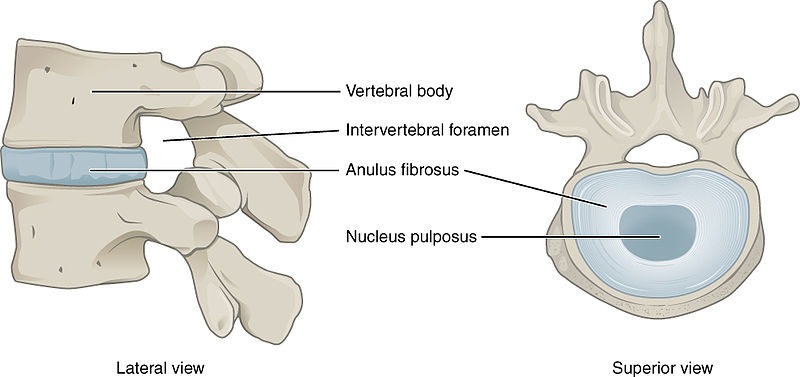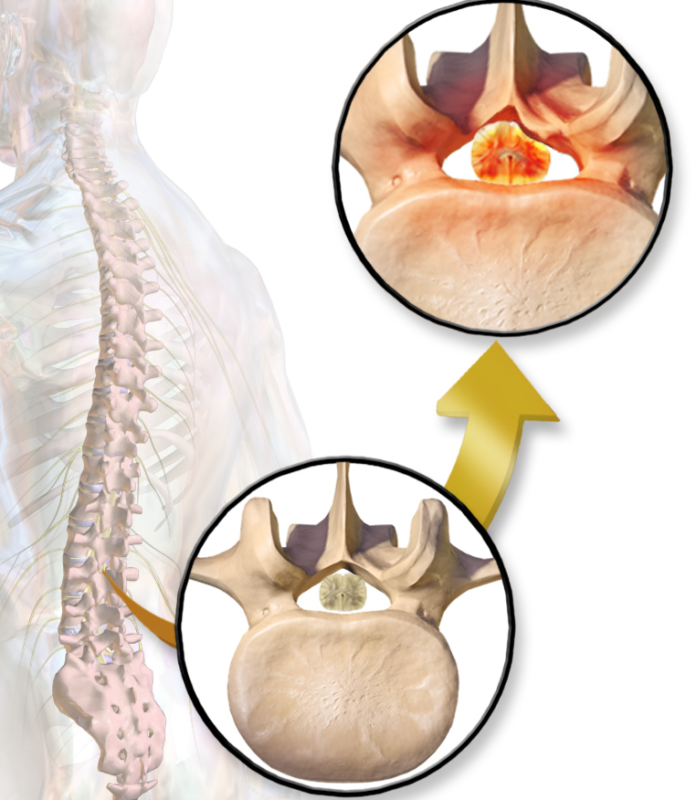Is your lower back pain constant, chronic or the result of an injury? Are discomfort and aches a regular part of your life? Does bending or lifting send shooting pain through your lower back, even into your leg?
There is a range of causes for lower back pain, and each one can trigger different signs and symptoms. To understand how physical discomfort occurs and what problems might be the cause of your symptoms, a basic understanding of the pieces of the puzzle is needed. This will guide the therapeutic approaches you take and uncover the steps that will aid relief.
The Structure and Function of the Lumbar Spine

Your lower back is an incredible piece of biological architecture designed to provide strength and motion, function and support. The bony structure consists of five lumbar vertebrae perfectly perched above the sacrum with the coccyx below. On either side, attached to the sacrum, are the two pelvic bones.
Fascia, ligaments, muscles and the three-dimensional configuration of the bones, in conjunction with the intervertebral discs (IVDs), hold the lumbar spine together. The hardy IVD’s sit between the vertebrae, enabling motion and acting as a shock-absorbing cushion. The posterior aspects of the vertebrae and discs then combine to form the base of the spinal canal, where the nerve roots and the spinal cord travels.
While this design is beautiful, maybe even perfect in many ways, it also contributes to lower back pain when things go awry.
Lower Back Pain Causes
The World Health Organization estimates that:
60% to 70% of the population will experience lower back pain at some point in their lives.That means if you’re sitting in a room of 10 people, 6 or 7 of them have experienced lower back pain.
As expected, there are a variety of causes for lower back pain. Disc herniation, disease, joint dysfunction, injuries, and spinal stenosis are some more common reasons for physical discomfort.
Disc herniation

Each intervertebral disc is formed by two parts; the nucleus pulpous and the annulus fibrosis. The placement and consistency of the nucleus allows motion around its central point.
Imagine nucleus pulpous a little like the jelly in a donut. The outer annulus is made from many tough layers that surround the nucleus like the rings of an onion. Together, these components enable movement, strength, and incompressibility.
However, with injury or age, the disc can break down and protrude into the spinal canal, placing pressure on a nearby nerve root. Depending on the nerve affected, this can cause leg pain, numbness, tingling, or weakness. Speaking of leg involvement, a lumbar disc herniation can also cause sciatica.
Sciatica

The nerves from the lower lumbar and upper sacral spine (L4 through S3) combine to form the sciatic nerve. A herniated disc that compresses one of these nerves can cause sciatica. This, the longest nerve in the body, then meanders downwards through the pelvis, the buttock and then into the leg. In the bottom, it must pass under or through the piriformis muscle. Here, it can also become compressed.
Sciatica can cause pain in the middle of the buttock, which then travels into the leg. It is usually one-sided and can also cause leg numbness and tingling.
Disease
There is a range of diseases that fall into the category of lower back pain causes. These range from cancer to benign tumors, referred pain to spinal infection, osteoporosis and arthritis. While far less common than mechanical pain, it’s important these are ruled out. There are several red flags, or indicators, to be aware of that may imply a serious underlying condition. These include:
- Fever
- History of cancer or IV drug use
- Inability to find a comfortable position
- Incontinence
- Night pain
- Pain triggered by injury
Joint dysfunction
If you experience lower back pain, there’s a good chance it is mechanical in nature. Your spinal joints, muscles and ligaments can get damaged and inflamed, triggering discomfort. This can feel like an ache or be sharp and incapacitating. For some, the pain is short-lasting. For others, it lasts for months or years.
Find lower back pain relief with naturally-derived products
According to a study published in the Manual Therapy Journal, indicators that your lower back pain is mechanical in nature include:
“Pain when lifting… intermittent pain during the day, pain that develops later in the day, pain on standing for a while, with lifting, bending forward a little, on trunk flexion or extension, doing a sit up, when driving long distances, getting out of a chair, and pain on repetitive bending, running, coughing or sneezing…”
Injuries
Injuries are common in the realm of lower back pain causes. These can involve ‘jammed’ spinal joints, which become inflamed and tender. Sprains or strains can result from lifting incorrectly or moving items that are simply too heavy. If a significant trauma occurs, like a car accident or fall, fractures and dislocations may result. If trauma is not remarkable, but an underlying condition like cancer or osteoporosis is present, fractures can also happen. Each of these can cause lower back pain.
Spinal stenosis

The spinal canal and the area at the back of the vertebrae and intervertebral discs where the spinal cord travels is usually wide enough to allow the spinal cord and its nerve roots plenty of space to move. Sometimes, however, through disc herniation, degeneration, tumors or injury, this space can become narrowed. When it does, it can compress nerve tissue and cause pain.
When this happens in the lower back, it can cause numbness, tingling, or weakness in one or both legs and feet. Cramping may occur in your lower limbs when you stand or walk for long periods of time and will often ease by sitting or bending forward.
The Right Diagnosis is the First Step to Relief
Determining the right diagnosis will help you to identify the best course of action and treatment to find relief. To learn more about symptoms and diagnoses of lower back pain, visit our article on Lower Back Pain: Symptoms and Diagnosis.
While it can sound scary, remember that most lower back pain causes are benign and respond beautifully to safe and natural approaches. Chiropractic care, physical therapy, and massage can help. Stretching the piriformis muscle may decrease discomfort, especially for sciatica. CBDMEDIC™’s Back and Neck Pain Relief Ointment offers significant relief using its active ingredients, camphor, and menthol. Our menthol and camphor topicals provide fast, efficient relief while being cruelty-free and natural. Natural back pain relief can also be the most effective.
There is a range of lower back pain causes, from injury to disc herniations and more. If your pain is impacting your life, if you have a history of prior or current illness, or if you are in any way concerned about your pain, seek professional advice. Your back is too important to ignore.
Did you enjoy this article? Learn more about lower back pain!
Disclaimer: This information is for educational purposes only. It has not been approved by the FDA to diagnose, treat, prevent, cure, or mitigate any diseases or conditions. We use CBD in our products for cosmetic purposes only.


